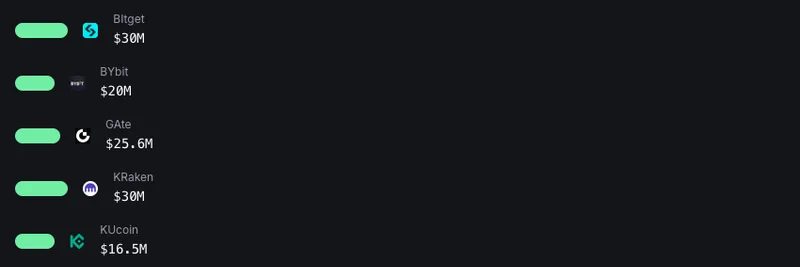In the wild world of crypto, where prices can swing like a pendulum on steroids, having the right tools can make all the difference. Just ask anyone who was trading on Ethereum during the flash crash of October 10, 2025. That night, sparked by President Trump's surprise announcement of 100% tariffs on BRICS countries, the market went into a tailspin. Bitcoin, Ethereum, and a slew of altcoins—including plenty of meme tokens—saw massive liquidations totaling over $16 billion in leveraged positions. It was chaos, with gas prices fluctuating and manual trades turning into a nightmare.
But amid the frenzy, some traders emerged unscathed, even thrilled. Enter Hasu, a strategy lead at Flashbots and Lido, who took to X (formerly Twitter) to sing the praises of CoWSwap's limit orders. In his post, he quoted another user highlighting solver-based DEXes like CoWSwap, UniswapX, and 1inch, noting how they handle gas prices in real time. Hasu added: "@CoWSwap limit orders made anyone who used them very happy last night. And more generally, that trade execution is outsourced to professional traders in the busiest night of the year gave you a big advantage over anyone trading manually. Huge advantage of their solver model."
He's spot on. Let's break this down and see why this matters, especially if you're diving into the meme token scene, where volatility is basically the name of the game.
What Happened During the Ethereum Flash Crash?
On October 10, 2025, the crypto market experienced a sharp "flash crash," a term for a rapid, deep price drop followed by a quick recovery. According to reports from CryptoSlate and Forbes, the trigger was Trump's tariff bombshell, which sent shockwaves through global markets. Ethereum's price dipped toward $3,500, wiping out billions in longs and causing a surge in trading activity.
Gas fees—those pesky costs for executing transactions on Ethereum—became unpredictable. In high-volatility moments like this, gas prices can spike as everyone rushes to buy, sell, or liquidate. For manual traders using traditional DEXes, this meant failed transactions, slippage (getting a worse price than expected), or just straight-up frustration. But for users of solver-based platforms? It was business as usual.
Decoding the Solver Model: A Simple Explainer
If you're new to this, a DEX (Decentralized Exchange) is like a peer-to-peer marketplace for crypto trades without a central authority. Traditional ones like Uniswap let you swap directly, but they can be inefficient during peak times.
Enter the solver model, pioneered by platforms like CoWSwap. Here's how it works in plain English: Instead of executing your trade immediately on-chain, you submit an "intent"—basically, what you want to trade and at what price. Then, a network of professional solvers (algorithms and traders) competes to find the best way to fulfill it. They batch orders, route through multiple liquidity sources, and even handle gas optimization in real time.
The result? Better prices, lower fees, and higher success rates, especially when the network is congested. In the case of limit orders—where you set a specific price threshold for your trade—CoWSwap's system ensures they're executed only when conditions are met, without you babysitting the screen.
As the quoted user @0x9212ce55 pointed out, "All you do on Ethereum is to go to a solver-based DEX... and your order will be filled by a sophisticated entity that can manage gas price for settlement txs in real time just fine." During the flash crash, this meant CoWSwap users avoided the pitfalls that plagued manual traders.
Why This is a Big Deal for Meme Token Traders
Meme tokens thrive on hype, FOMO, and sudden price pumps—or dumps. Think Dogecoin, Shiba Inu, or the latest viral sensation; they're often the first to feel the heat in market-wide events like this flash crash. High volatility means opportunities, but also risks: missed entries, bad exits, and eaten-up profits from slippage.
Using a solver-based DEX like CoWSwap gives you an edge. Your trades are outsourced to pros who navigate the chaos, ensuring limit orders fire off precisely when the price hits your target. Replies to Hasu's post echoed this—one user celebrated every order filling perfectly, while another noted some hiccups but still acknowledged the system's strength.
For blockchain practitioners chasing meme token gains, this isn't just tech jargon; it's a tool for survival. In a knowledge base like ours at Meme Insider, we emphasize staying ahead with innovations that enhance your trading toolkit.
Key Takeaways and Tips for Future Volatility
- Outsource the Heavy Lifting: Let solvers handle execution so you can focus on strategy.
- Set Smart Limits: Use limit orders to automate buys/sells at desired prices, reducing emotional decisions.
- Diversify DEXes: Experiment with CoWSwap, UniswapX, or 1inch for different scenarios.
- Stay Informed: Follow experts like @hasufl for real-time insights on Ethereum's evolving landscape.
The October 2025 flash crash was a stark reminder of crypto's unpredictability, but it also highlighted how far DeFi has come. If you're building your meme token portfolio, incorporating solver tech could be the difference between riding the wave and wiping out. What's your go-to DEX in turbulent times? Drop your thoughts in the comments!




